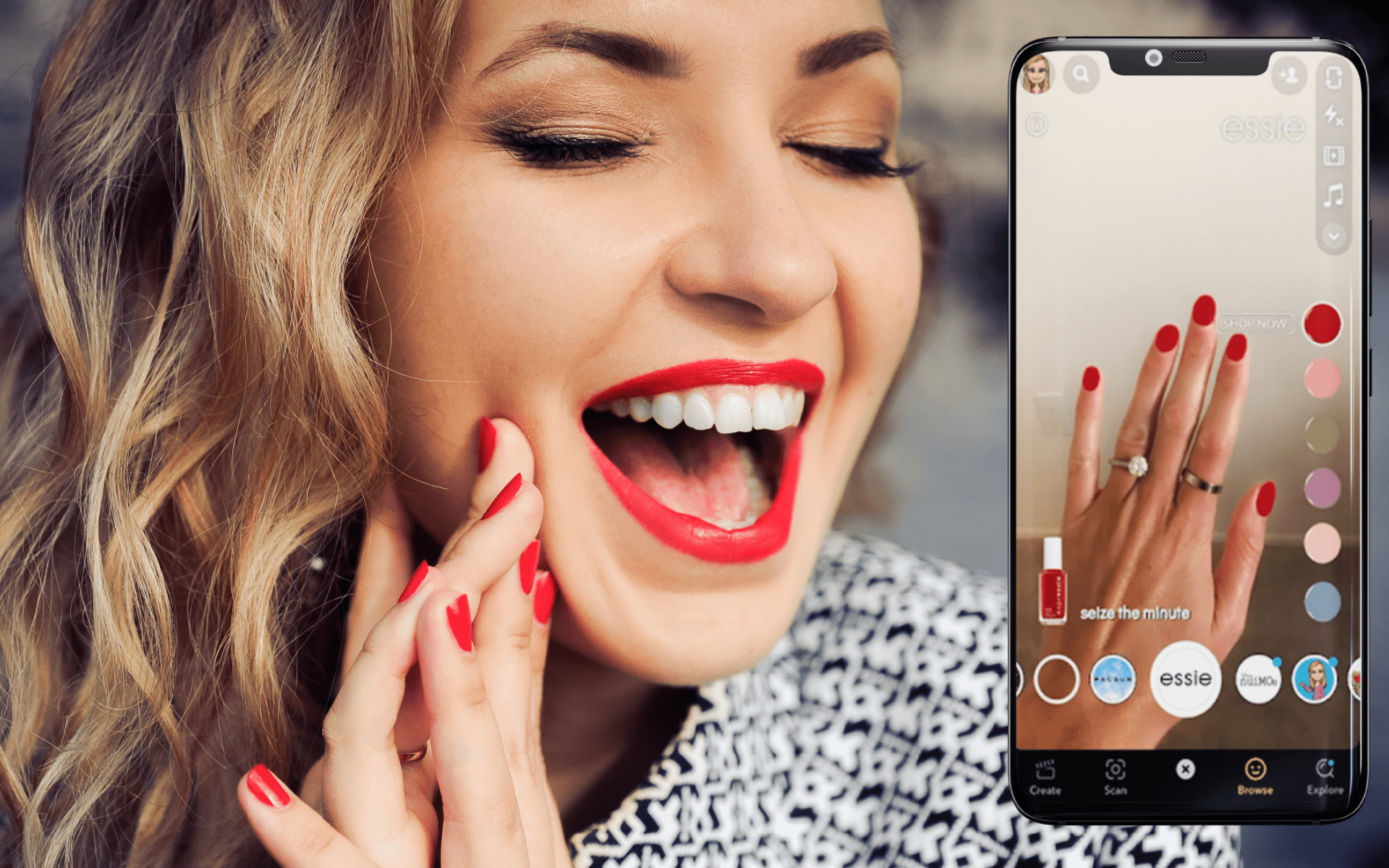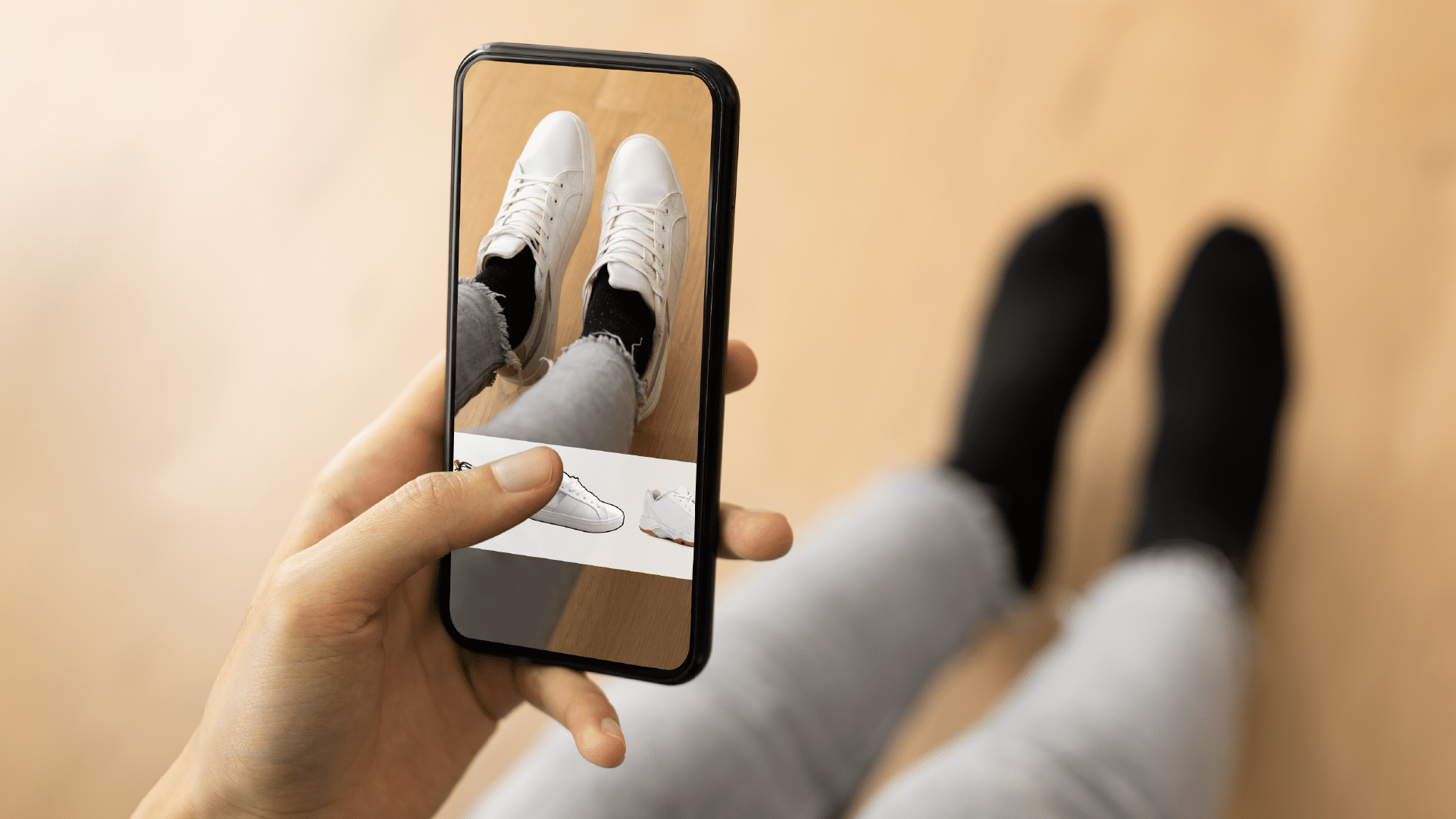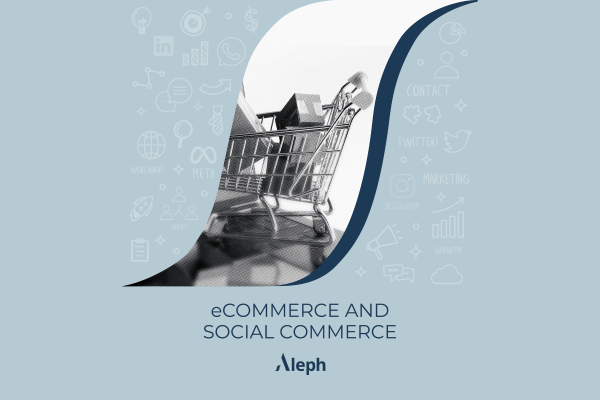
As I am sure we all know by now, whether we are past or present users, Snapchat is a widely known camera focused platform, offering something more distinctive in a world of fixity and timelines. From cute dog ears and flower crowns to AR powered shopping lenses, Snapchat has become a real pioneer in bringing its users AR technology through filters and interactive lenses. Yes, filters are now cool again! Who knew?
In case you didn’t know, Snapchat is now one of the most developed AR platforms in the world, Instagram, however, remains a major contender. And whilst we’re still learning about the full influences of AR on conversion and ROI, it’s already shown to provide valuable solutions for both brands and companies, improving the social commerce experience and of course, saving us from some inconveniences of shopping online.
The social media funnel has been simplified even more to convert sales, social commerce has shortened the path to buy, subsequently allowing consumers to move through the purchase journey, from discovery to checkout, within just one app, and in most cases one tap.
Three main reasons why marketers have considered incorporating AR into their social commerce strategies:
Consumer interest is on the rise. Although in the past the thought of AI would send many into a frenzy, the tin hats have been removed, and people have warmed to the idea of shopping with AR. Studies have shown that it will be incorporated throughout marketing plans and strategies in the near future. Anyone seen the movie Clueless? Looks like Amy Heckerling was right after all!
Social media has proven to be a great place to get your AR fix. The famous dog-ears and baby-face lenses put AR on the social media map and now most social media platforms have a feature where you can apply AR filters on your photos and videos! This fun and silly way to take photos has evolved into a primary mode of social communication and entertainment. As a result, AR has already become a familiar technology to use, and further discover throughout the consumer journey.
And last but not least., the Beauty industry of course. Since AR has been evolving, beauty, fashion and technology have shown to be the most vertical/industries for AR social commerce. This is usually because they lend themselves best to the main application for shopping-related social AR, offering virtual try-on experiences, and product customization!
However, as social platforms continue to expand their AR offerings, they are opening up more opportunities for brands from new verticals to participate. Snapchat is a great example, recently released wrist-tracking technology for jewellery and watchmakers, allowing customers to simulate bracelets and watch try-on.
Another amazing way to help people who still don’t feel too comfortable being outside! Social commerce continues to grow, with brands being able to use AR to increase customer engagement and personalise the shopping experience. Even showing early potential to boost sales and conversions on social media.
But What is the Real Potential of AR in Social Commerce?
Social media provides the prime venue for consumers to warm to AR, as users are already experimenting with AR filters and lenses. According to AR insider, in the Snap Consumer AR Global Report 2021, nearly 75% of the global population, and almost all the people who use social apps will be frequent users by the year 2025! This audience is however predominantly Gen Z, digital natives who are growing up to value digital assets just as much as physical goods, and of course, anticipating the levels AI can reach.

So Which Verticals and Industries are set to Include AR in Upcoming Strategies?
Beauty and fashion are paving the way for AR shopping on social media, using applications like virtual try-on, product personalisation, or visualisation. As tech develops, opportunities are opening for brands in new industries. AR has been shown to help to bridge the gap between social media, digital commerce, and brick-and-mortar businesses. Social platforms are striving to carve out their own AR toolkits, offering more brands a chance to get involved. Furniture and home decor industries are likely the next frontier for AR shopping on social media, in which Pinterest would play a key role. Nonetheless, as mentioned it is still too soon to fully assess AR’s impact on either conversion or return rates.

Marketers can now use social AR tools to create their own filters, effects, or 3D experiences on social media. By advertising their products with the most innovative and disruptive technology, they can influence their desired target audience, and convert them into sales. For instance, any fashion brand can use the power of AR to display the product live to their potential buyers. The more immersive the experience (including whether it has a direct shopping element), the more time, budget, and resources it will take. And who knows, we might even be buying houses based on virtual tours in the near future!









